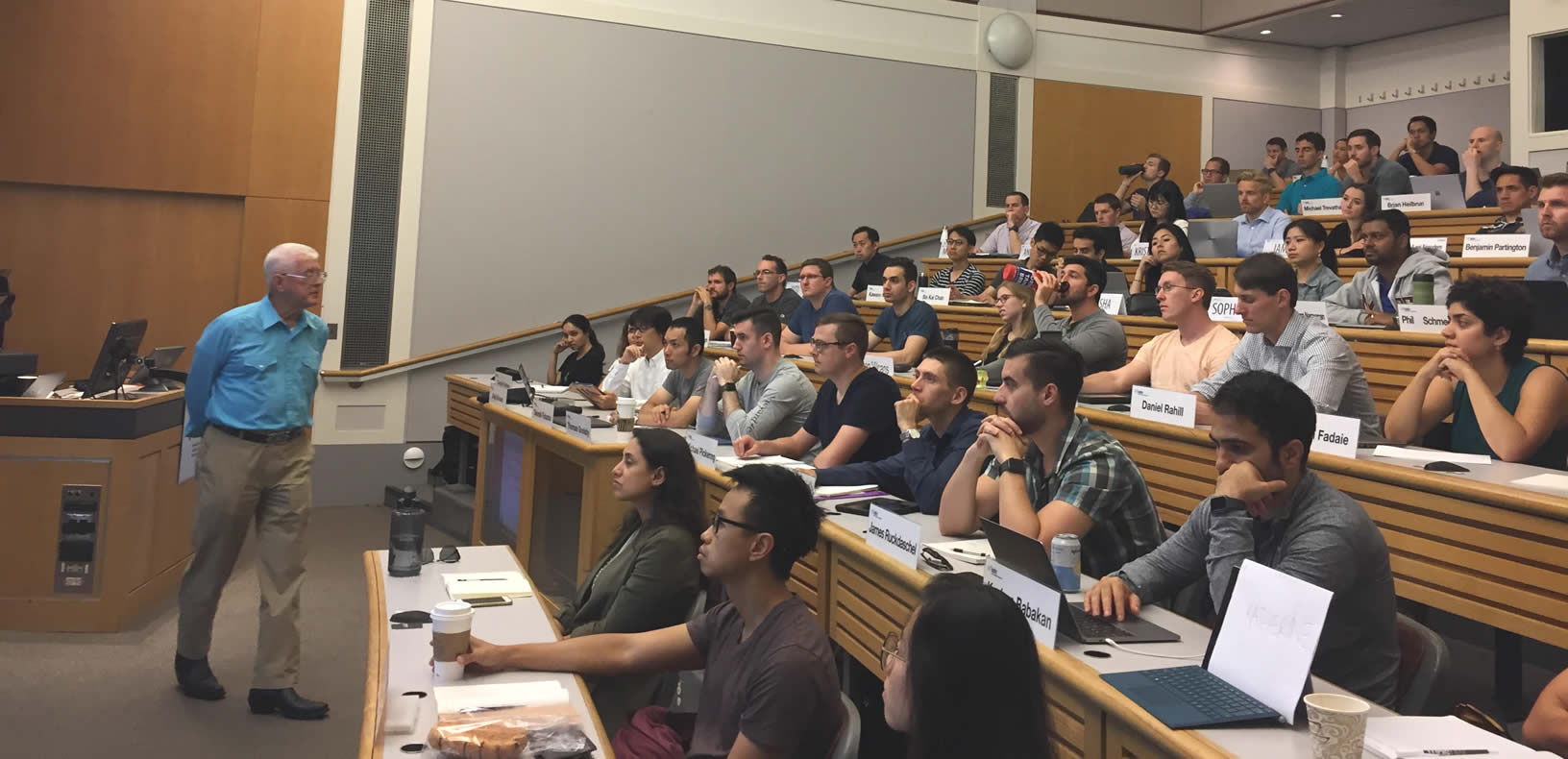The suite of courses I teach build on the observation that forecasts are ‘always wrong’ insofar as what actually happens routinely differs from earlier forecasts. These classes present methods to deal with the fact that the future is uncertain, and thus that we can substantially improve the performance of our systems by making them adaptable and resilient to possible future events. The courses emphasize ‘learning by doing’ and coach students in individual projects.
To enhance student interaction, I now use ‘the flipped classroom’ approach in all my classes. In essence, I spend class time engaging with students through discussion of issues. I do not lecture, do not talk at student; I engage with students Correspondingly, students prepare for classes by reviewing material before class, identifying questions, connecting the material to their experience and knowledge. In class we share and discuss student questions and responses.
Risk and Decision Analysis IDS.333 and EM.423
Focuses on design choices and decisions under uncertainty. Topics include identification and description of uncertainties using probability distributions; the calculation of commensurate measures of value, such as expected net present values; Monte Carlo simulation and risk analysis; and the use of decision analysis to explore alternative strategies and identify optimal initial choices. Presents practical examples from a variety of engineering systems.
Engineering Systems Analysis for Design IDS.332 and EM.422
Covers theory and methods to identify, value, and implement flexibility in system development and design, also known as “real options.” Topics include definition of uncertainties, simulation of performance for scenarios, screening models to identify desirable flexibility, and multidimensional economic evaluation. Students demonstrate proficiency through an extended application to a systems of their choice.
Planning and Design of Airport Systems 16.781, IDS.670, and 1.231
(Taught in alternate years even numbered years, with Prof. Amedeo Odoni and Hamsa Balakrishnan.)
Focuses on current practice, developing trends, and advanced concepts in airport design and planning. Considers economic, environmental, and other trade-offs related to airport location. Topics include: analysis of the effect of airline operations on airports; demand prediction; determination of airfield capacity; estimation of levels of congestion; terminal design; the role of airports in the aviation and transportation system; access problems; optimal configuration of air transport networks and implications for airport development; and economics, financing, and institutional aspects. Special attention to international practice and developments.
Excel Self-Study Modules
Practical Guide to Implementing Flexibility Analysis Using Microsoft Excel (available on line for self-study as needed for above courses).
